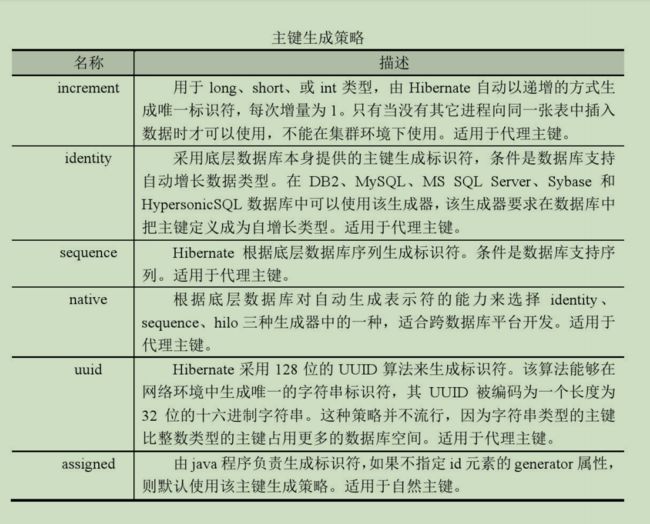●项目结构
●本项目所用Hibernate版本为5.4.5.Final,导入jar只需lib目录下的required和MySQL所需的jar驱动
1.导入相关jar包(配置构建路径)
说明:本人已将所需的jar包添加到用户库,所以无需建lib目录导入jar包
鼠标在项目名右键,构建路径-->配置构建路径-->添加库-->用户库,选择所需的库
2.创建实体类User.java
package com.sve.Test; public class User { private int uid; private String username; private String password; private String address; public int getUid() { return uid; } public void setUid(int uid) { this.uid = uid; } public String getUsername() { return username; } public void setUsername(String username) { this.username = username; } public String getPassword() { return password; } public void setPassword(String password) { this.password = password; } public String getAddress() { return address; } public void setAddress(String address) { this.address = address; } }
3.创建对象映射User.hbm.xml
一般跟JavaBean对象放在同一目录,后缀为 .hbm.xml
xml version="1.0" encoding="UTF-8"?>
DOCTYPE hibernate-mapping PUBLIC
"-//Hibernate/Hibernate Mapping DTD 3.0//EN"
"http://www.hibernate.org/dtd/hibernate-mapping-3.0.dtd">
<hibernate-mapping package="com.sve.Test">
<class name="User" table="User">
<id name="uid" column="uid">
<generator class="native">generator>
id>
<property name="username" column="username">property>
<property name="password" column="password">property>
<property name="address" column="address">property>
class>
hibernate-mapping>
4.创建hibernate.cfg.xml
放在src目录下,名字不可改
xml version="1.0" encoding="UTF-8"?>
DOCTYPE hibernate-configuration PUBLIC
"-//Hibernate/Hibernate Configuration DTD 3.0//EN"
"http://www.hibernate.org/dtd/hibernate-configuration-3.0.dtd">
<hibernate-configuration>
<session-factory>
<property name="hibernate.connection.driver_class">com.mysql.jdbc.Driverproperty>
<property name="hibernate.connection.url">jdbc:mysql:///hibernate_demo?serverTimezone=UTCproperty>
<property name="hibernate.connection.username">rootproperty>
<property name="hibernate.connection.password">123456property>
<property name="hibernate.dialect">org.hibernate.dialect.MySQL5Dialectproperty>
<property name="hibernate.show_sql">trueproperty>
<property name="hibernate.format_sql">trueproperty>
<property name="hibernate.hbm2ddl.auto">createproperty>
<mapping resource="com/sve/Test/User.hbm.xml" />
session-factory>
hibernate-configuration>
5.测试
package com.sve.Test; import org.hibernate.Session; import org.hibernate.SessionFactory; import org.hibernate.Transaction; import org.hibernate.cfg.Configuration; public class Test { public static void main(String[] args) { User user=new User(); user.setUsername("小小"); user.setPassword("123"); user.setAddress("天坛"); //获取加载配置管理类 Configuration configuration = new Configuration(); //不给参数就默认加载hibernate.cfg.xml文件, configuration.configure(); //创建Session工厂对象 SessionFactory factory = configuration.buildSessionFactory(); //得到Session对象 Session session = factory.openSession(); //使用Hibernate操作数据库,都要开启事务,得到事务对象 Transaction transaction = session.getTransaction(); //开启事务 transaction.begin(); //把对象添加到数据库中 session.save(user); //提交事务 transaction.commit(); //关闭Session session.close(); } }
运行成功后,查看相应的数据库的表是否发生改变和控制台是否有相应的语句
配置文件说明:
一.映射配置文件
1.映射配置文件位置和名称没有固定要求
2.id标签和property标签中,column属性可以省略,和name属性值一样(不建议这样做)
3.property标签type属性,设置生成表字段的类型(一般不设置,自动对应类型)
二.核心配置文件
1.核心配置文件位置和名称是固定的
2.数据库部分是必要的,Hibernate部分是可选的,映射文件是必须的
实体类编写规则:
1.实体类属性是私有的
2.私有属性使用公开的的set和get方法操作
3.要求实体类有属性作为唯一值(一般使用id)
4.实体类属性建议不使用基本数据类型,使用基本类型对应的包装类(本示例为简单示例,所以使用基本数据类型)
hibernate主键生成策略
1.native:根据使用的数据库自动选择相应的值
2.uuid:使用uuid生成策略,实体类属性类型 必须 是 字符串类型
本示例参考https://www.cnblogs.com/Java3y/p/8520601.html,在此感谢Java3y

